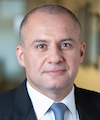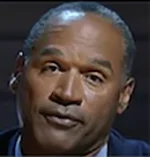 Ronn Torossian Ronn Torossian |
It was inevitable that, at some point, returning to full flights would become a reality. As the airline industry looks for ways to dig itself out of the massive hole left by COVID-19, it appears this is a step many airlines are now ready to make.
Given consumers are currently less than enthusiastic about the notion of full flights, however, how are major U.S. airlines responding in order to encourage travelers to book those flights … especially in the middle seat?
American Airlines, the world’s largest airline, opted for a subtle, indirect approach with this announcement: “Customers may notice that flights are booked to capacity starting July 1…”
Conversely, American’s competitor, United, said it has been willing to “sell every possible seat” even as travel demand plummeted after the pandemic landed in America. However, one message both major carriers agreed on was a policy of communicating with passengers when more than 70 percent of the seats on a flight were booked. This message was intended to offer consumers the option of switching to a less-crowded flight if they’re concerned about the potential risk of contracting the virus.
Now, though, most airlines have reached the point where they need to entice travelers in larger numbers. Otherwise, the biggest brands—and the industry as a whole—will face bleak fall and winter travel seasons. According to media reports, a recent survey of people passing through TSA checkpoints compared to the same time last year was about one-quarter. These are worrying numbers during what’s traditionally a peak summer travel period for airlines.
However, the same survey noted that the number of airline passengers is steadily rising, up dramatically since the lowest point in April. That said, there are still fewer planes in the air and that means any increase in the number of passengers means fewer empty seats between passengers who may still be concerned about the pandemic.
Hoping to appeal to fliers who are still uneasy, airlines including JetBlue have said they plan to keep the middle seat open a while longer. JetBlue committed to the end of July, while larger airlines—like Southwest and Delta—have committed to keeping that seat empty at least through September. That could give these airlines a distinct public relations advantage, if they choose to leverage that selling point.
CNN reported that Delta CEO Ed Bastian said the policy to keep the seat open would remain until fall, and that consumer demand could potentially extend that “as the business starts to return, as demand starts to grow, and if people have more confidence in their travel experience, we will decide later in this year when we start to ease up on (the restricted number of passengers).”
Other airlines are pushing messages that include information regarding enhanced cleaning practices and making masks compulsory. However, with many other businesses across various industries touting the same policies, these enhancements are starting to read less like benefits and more like business as usual. Over the next few months, we’ll see which narratives influence consumer confidence most.
***
Ronn Torossian is CEO of 5WPR, a leading PR agency.


 The techniques deployed by OJ Simpson's defense team in the 'trial of the century' served as a harbinger for those used by Donald Trump... People worry about the politicization of medical science just as much as they fret about another pandemic, according to Edelman Trust Barometer... Book bans aren't restricted to red states as deep blue Illinois, Connecticut and Maryland challenged at least 100 titles in 2023.
The techniques deployed by OJ Simpson's defense team in the 'trial of the century' served as a harbinger for those used by Donald Trump... People worry about the politicization of medical science just as much as they fret about another pandemic, according to Edelman Trust Barometer... Book bans aren't restricted to red states as deep blue Illinois, Connecticut and Maryland challenged at least 100 titles in 2023. The NBA, which promotes legalized gambling 24/7, seems more than hypocritical for banning player for placing bets... Diocese of Brooklyn promises to issue press release the next time one of its priests is charged with sexual abuse... Truth Social aspires to be one of Donald Trump's iconic American brands, just like Trump University or Trump Steaks or Trump Ice Cubes.
The NBA, which promotes legalized gambling 24/7, seems more than hypocritical for banning player for placing bets... Diocese of Brooklyn promises to issue press release the next time one of its priests is charged with sexual abuse... Truth Social aspires to be one of Donald Trump's iconic American brands, just like Trump University or Trump Steaks or Trump Ice Cubes. Publicis Groupe CEO Arthur Sadoun puts competition on notice... Macy's throws in the towel as it appoints two directors nominated by its unwanted suitor... The Profile in Wimpery Award goes to the Ford Presidential Foundation for stiffing American hero and former Wyoming Congresswoman Liz Cheney.
Publicis Groupe CEO Arthur Sadoun puts competition on notice... Macy's throws in the towel as it appoints two directors nominated by its unwanted suitor... The Profile in Wimpery Award goes to the Ford Presidential Foundation for stiffing American hero and former Wyoming Congresswoman Liz Cheney. JPMorgan Chase chief Jamie Dimon's "letter to shareholders" is a must-read for PR people and others interested in fixing America and living up to its potential... Get ready for the PPE shortage when the next pandemic hits... Nixing Netanyahu. Gaza carnage turns US opinion against Israel's prime minister.
JPMorgan Chase chief Jamie Dimon's "letter to shareholders" is a must-read for PR people and others interested in fixing America and living up to its potential... Get ready for the PPE shortage when the next pandemic hits... Nixing Netanyahu. Gaza carnage turns US opinion against Israel's prime minister. Trump Media & Technology Group sees Elon Musk's X as an option for those who want the free expression promised by Truth Social but without Donald Trump, owner of 57.3 percent of TMTG... Chalk one up for "anti-woke warrior" governor Greg Abbott as University of Texas lays off 60 DEI-related staffers... Five percent of Americans see the US as its own worst enemy, according to Gallup.
Trump Media & Technology Group sees Elon Musk's X as an option for those who want the free expression promised by Truth Social but without Donald Trump, owner of 57.3 percent of TMTG... Chalk one up for "anti-woke warrior" governor Greg Abbott as University of Texas lays off 60 DEI-related staffers... Five percent of Americans see the US as its own worst enemy, according to Gallup.


 Have a comment? Send it to
Have a comment? Send it to 
No comments have been submitted for this story yet.